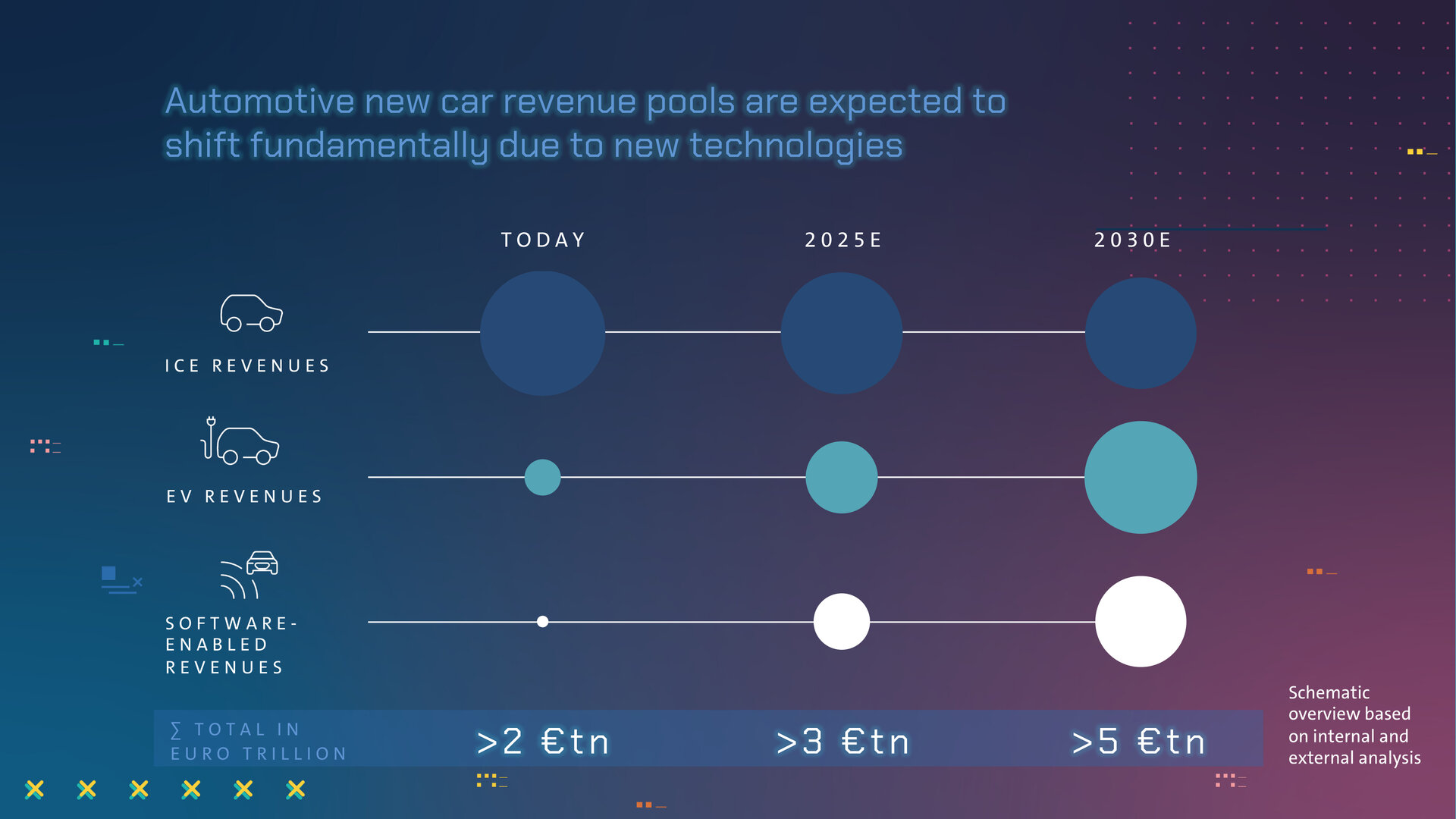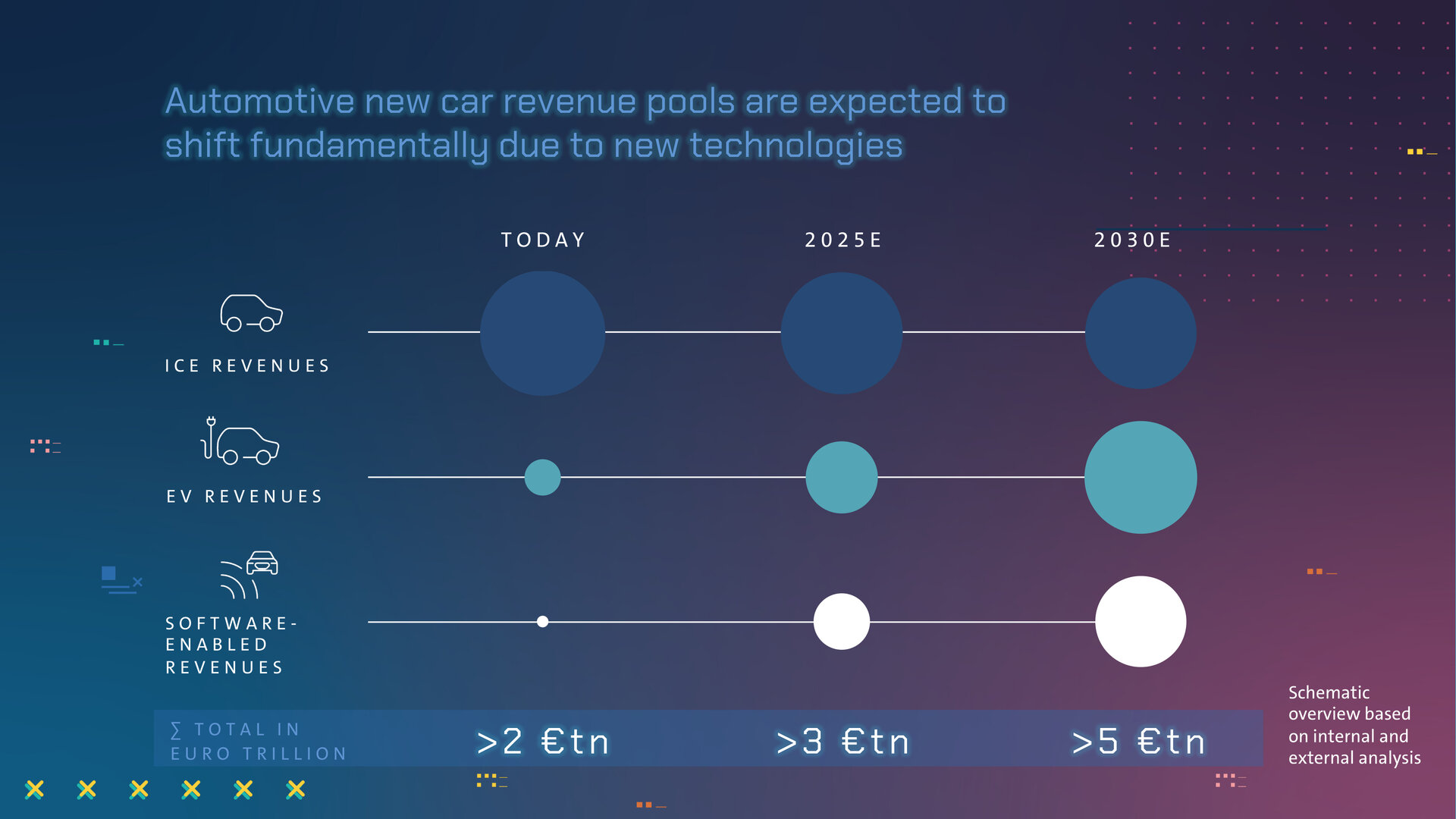In 2025, the Volkswagen Group wants to introduce a uniform software platform with just one operating system for all Group brands via the CARIAD software unit. A key feature of the OS will be the level 4 capability for autonomous driving. The hardware basis will be the new Scalable Systems Platform.
An operating system from VW to Audi, Porsche and Lamborghini
As part of the “NEW AUTO strategy”, the group today gave an outlook on the strategic projects up to the year 2030. One of them is the introduction of a uniform and scalable operating system for all group brands. These include VW, Audi, Skoda, Seat, Porsche, Lamborghini and Bentley.
The company's own automotive software unit CARIAD is currently working on three software platforms that are planned for the coming years. The first is the software platform 1.1 (E³ 1.1) currently in use, with which upgrades and over-the-air updates for the MEB product portfolio are possible for the first time, including the VW ID.4, Skoda Enyaq or Counting Cupra BORN. The first OTA update “ID.Software2.3” for the ID.family has been available since last weeks.
The same infotainment system for Audi and Porsche
The software platform 1.2 (E³ 1.2) will then start in 2023 and, among other things, introduce a new, standardized infotainment system and over-the-air updates for vehicles from the Audi and Porsche brands. At Porsche, the PCM infotainment system was recently upgraded to version 6.0 in the 911, Cayenne and Panamera. Today's announcement shows that in two years there will be an end to their own solution and that Audi and Porsche will get the same infotainment system.
 The planned software platforms (Image: Volkswagen)
The planned software platforms (Image: Volkswagen) Software Platform 2.0 enables level 4
The biggest step is planned for 2025 with the software platform 2.0 (E³ 2.0), which is to introduce the uniform operating system for all group brands. Volkswagen explains that a key feature of the platform will be its level 4 capability for autonomous driving so that customers can leave driving completely to the car. The company expects autonomous driving to become a “significant source of income” by 2023. “Software plays the decisive role in the transformation from a pure car manufacturer to an integrated mobility company,” said Dirk Hilgenberg, CEO of CARIAD.
SSP as next mechatronics platform
The hardware basis of the new software will be the Scalable Systems Platform (SSP). SSP is the name of the new mechatronics platform of the next generation with gradually reduced complexity. The SSP will be the successor to MQB, MSB, MLB, as well as MEB and PPE and will also drive the consolidation of today's platforms. Three ICE platforms (Internal Combustion Engine/Combustion Engine) are initially to be reduced to two BEV (Battery Electric Vehicle/E-Auto) platforms in order to ultimately create a uniform architecture for the entire product portfolio. Volkswagen plans to start producing all-electric vehicles at the SSP from 2026. Volkswagen expects more than 40 million vehicles to be produced on the platform over the entire service life of the platform. Investments of 800 million euros are planned for a new center for the technical development of the SSP in Wolfsburg.
 The first vehicles are to be based on the SSP in 2026 (picture: Volkswagen)
The first vehicles are to be based on the SSP in 2026 (picture: Volkswagen) High sales from new Sources expected
Over the next few years and decades, Volkswagen expects a strong shift within the sources of sales and strong growth in the mobility market. According to the company, the ICE market is likely to decline by over 20 percent over the next ten years. At the same time, sales of electric vehicles will grow rapidly and overtake combustion engines as the leading technology. It is estimated that by 2030 a turnover of 1.2 trillion euros with software alone, in addition to the expected business with BEVs and ICEs, will account for around a third of the entire mobility market. This overall market, in turn, could more than double from around two billion euros today to an expected five billion euros.
Volkswagen therefore also wants to develop system capabilities for autonomous shuttle fleets by 2030 and own and operate some of them itself in order to create an expanded range of mobility services and financing. Mobility as a service (MaaS) and transport as a service (TaaS), fully autonomous, should become an integral part of the corporate strategy. The future value chain consists of four areas: the self-driving system, its integration into the vehicle, the fleet management and the mobility platform.
-
 Shift of the Sources of sales until 2030 (Image: Volkswagen)
Shift of the Sources of sales until 2030 (Image: Volkswagen)
Image 1 of 2
 Postponement of revenue sources until 2030
Postponement of revenue sources until 2030